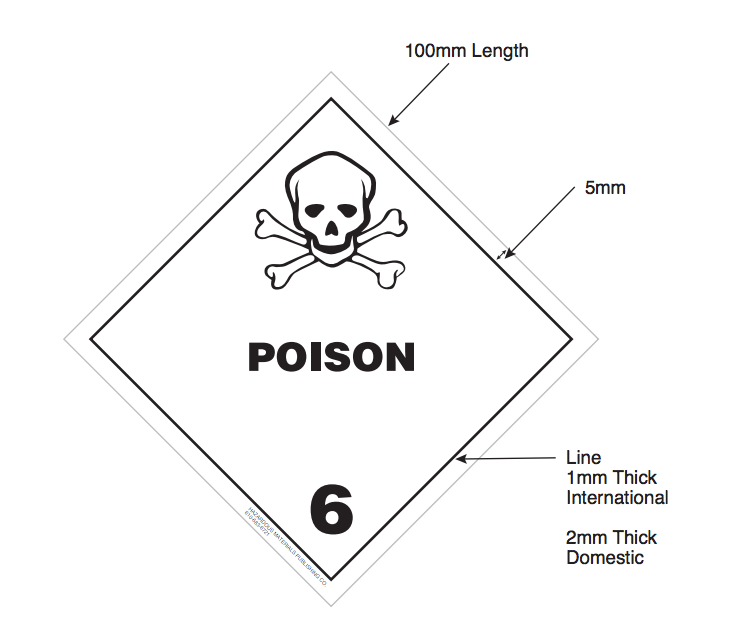Most people think of picnics, baseball games, state fairs, swimming and BBQ’s when they think of summer, I think of lacerations, insurance investigations and operations. See, I work from September to June each year, that is I run seminars all around the country, at the strong urging of my wife and family, fall, winter and spring I am on the road. Summers are reserved for me, and my leisure time. Well, that is the plan!!!
When I work, I work hard, all day long. My day starts at 5:30 in the morning with the room setup, along with the video and sound check, then by 8:00 I am presenting my seminar, then once the seminar is completed, I drive or fly to the site of my next meeting typically arriving after 10:00 at night. I hate to cancel a seminar for any reason. In fact, I don’t believe that in the last 20 years I ever cancelled a seminar from sickness, only sloth. Example: once I finished a seminar from the back of my departing ambulance, but I did finish it.
I go for 10 months straight, day in and day out, month after month, from fall to spring, from New York to San Diego, Seattle to Orlando, Hawaii to Puerto Rico, then July 1 the wheels fall off. In my youth, it was airplane landing gear failures, vehicle rollovers, motorcycle crashes, river running, surfing and skateboard mishaps. In my senior years, a short hike on a nearby trail could most likely include tens of thousands of dollars in medical bills, consultations, operations, rehabilitation, braces, stitches, bone fusions, skin grafts, X-rays, CT scans, and MRI’s. You see, receptionists, nurses, interns, digital imaging technicians, orthopedic and plastic surgeons are my “Boys of Summer”.
On any summer day as you are being checked in to your vacation cabin, I could be checking into the ER. As your arm is casting to fish, they might be casting my arm. As you peacefully fall asleep to the smell of sand and the sound of surf, they could be violently anesthetizing me, to the stench of antiseptics and the unstable rhythm of my heart monitor. Ok, I think you get the point. If only July and August were leap months.
I will not bore you with the details of this summer’s sidelining malfeasance but, if this recent round of antibiotics does not stop the infection, that I think I picked up in the ER as they were stitching-up my leg, and I don’t survive the rest of the summer to see you in the fall, in return for your support over the years, which has allowed me to afford top tier airplane, car and medical insurance, I would like to help you survive your first hazardous waste shipment using the new e-manifest system. As I am pretty sure many large quantity generators made their last fee free, paper hazardous waste manifest shipment some time at the end of May, or about 90 days ago.
The following requirements assume that you are familiar with the current paper manifesting requirements as they only address the e-manifest changes to the regulations. In addition I have included this blog in the 2018/2019 Hazardous Materials, Substances and Waste Compliance Guide for future shipments.
THE E-MANIFEST SURVIVAL GUIDE
The 12 major differences and most important Web Pages during the transition from Paper to Electronic Hazardous Waste Manifests.
The E-manifest requirements can be found in the Environmental Protection Agency 40 CFR, in Section 262.20 for Generators, Section 263.20 for Transporters, Section 265.70 and Subpart FF for TSDFs and must be consulted before attempting to fully comply with these requirements. However, if you can remember the following changes and web pages, it will help you survive the transition under the new EPA Hazardous Waste E-manifesting requirements.
“Manifest submission type” means the type of manifest submitted to the e-Manifest system for processing including both electronic manifest submissions and paper manifest submissions.
“Paper manifest submissions” means submission of data to the paper processing center of the e-Manifest system by facility owners or operators. Submission of a paper manifest, EPA Form 8700-22 or a paper Continuation Sheet can be mailed, or by uploading an image file, or by the upload of a data file representation and image of a paper manifest or continuation sheet.
1) NO GO - IF THEY CAN’T SHOW
A generator may only use an electronic manifest for the tracking of waste shipments involving any RCRA hazardous waste, only if it is known at the time the manifest is originated, that all transporters and TSDFs named on the manifest participate in the electronic manifest system. However, it should be noted that a generator may also complete, sign by hand and retain a paper copy of a manifest, thereby enabling the transporter and subsequent waste handlers to enter into the system and manage the remainder of the manifest copies electronically.
2) “ON LINE - ON PAPER”, ALL THE SAME
Authorized electronic manifests that are obtained, completed, and transmitted, in lieu of paper, are the legal equivalent of paper manifest forms bearing handwritten signatures, and satisfy any and all requirements when obtaining, completing, signing, providing, using or retaining a manifest, including any regulations to give, provide, send, forward or return it, providing that the electronic manifest signatures meets the criteria described in §262.25 of this chapter.
3) MANIFESTS - DATA STORAGE
Generators, transporters and TSDF’s must keep or retain a copy of each manifest by retention in their account on the national e-Manifest system, so that copies are readily available for viewing and production if requested by any EPA or authorized state inspector. However, no party is liable, if the inability to produce an electronic manifest is due exclusively to a technical difficulty with the electronic manifest system.
4) PAPER MANIFEST - PAPER & IMAGE UPLOADS PAPER IMAGE UPLOADS
PAPER IMAGE UPLOADS
Receiving facilities may submit an image file upload, of the completed, ink signed
manifests, in lieu of submitting mailed paper forms to the e-Manifest system.
PAPER DATA UPLOADS
Data file uploads from paper manifests. TSDF’s may submit data file representations and an image of a completed, ink-signed manifests in lieu of submitting mailed paper forms or just image files, However, this method would require an “CROMERR” compliant certification that the data and images submitted, are an accurate and complete representation of the manifests received.
5) ACCESS, TO E-MANIFEST SYSTEM
A generator may participate in the electronic manifest system either by using their own electronic equipment or by portable equipment brought to the site.
6) STATE WASTES - CONSIDERATION
A generator, transporter and TSDF must each determine whether the generator state or the consignment state requires the generator to submit any legible photocopies of the e-manifest and if a shipment is beyond those regulated Federally as hazardous wastes. For shipments of hazardous waste to a designated facility, in an authorized State, which has not yet obtained authorization to regulate that particular waste as hazardous, the generator must assure, that the designated facility agrees to sign and return the manifest to the generator and that any out-of-state transporter signs and forwards the manifest to the designated facility.
7) DOT - HAZARDOUS MATERIAL SHIPPING PAPERS
Any requirement in the EPA disposal regulations, for a manifest to accompany a hazardous waste shipment, is satisfied when a copy of an electronic manifest is accessible during transportation and forwarded to the person who is scheduled to receive delivery of the waste shipment. However, the Hazardous Materials regulations requires shipping papers for all shipments of EPA hazardous waste. Generators must supply a paper document for compliance with 49 CFR 177.817. So, a generator using an electronic manifest must also provide the initial transporter with a printed paper copy of the electronic manifest.
8) UNAVAILABLE E-MANIFESTS
UNAVAILABLE E-MANIFESTS (GENERATOR)
If a generator has prepared and signed an electronic manifest for a hazardous waste shipment but, the electronic manifest system becomes unavailable for any reason prior to the time that the initial transporter has signed electronically,then the generator must obtain and complete a paper manifest and use these paper forms from that point forward.
UNAVAILABLE E-MANIFESTS (TRANSPORTER)
A transporter in possession of a hazardous waste, when the electronic manifest system becomes unavailable, shall reproduce sufficient copies of the printed manifest to be carried on the transport vehicle, or obtain and complete another paper manifest so that two additional copies can be delivered to the facility with the waste. Each printed paper copy must include a legible handwritten signature and a notation in the Special Handling and Additional Description space, (Item 14), of the replacement manifest for the one originated in the electronic manifest system and which must include the manifest tracking number of the manifest that it replaced, with a brief explanation why the electronic manifest was not available for completing the shipment. Then from that point, the paper replacement manifest copies shall be carried, signed and retained as records. Then it must be given to any subsequent transporters and the designated facilities, under the requirements that apply to the use of paper manifests.
9) E-MANIFEST UNDER TESTING
(GENERATOR TRANSPORTER and TSDF)
Whenever a generator has prepared an electronic manifest and signs it with a electronic signature method which is undergoing testing, the generator must also sign with an ink signature the generator certification on a printed paper copy of the manifest, ie; the Department of Transportation “hazardous material shipping paper” under the 49 CFR 172.200 Shipping Paper requirements. Then have the transporter sign both the electronic manifest electronically and the DOT shipping paper copy with an handwritten ink signature to acknowledge receipt. Finally, the driver must present the printed paper hazardous waste manifest (shipping paper) copy, bearing both generator and transporter handwritten ink signatures, to the designated facility, to be signed in ink to indicate the receipt of the hazardous waste that has been delivered.
10) TSDF E-MANIFESTS POST-RECEIPT - PROCEDURES
TSDFs must ensure that all manifests it receives are completed and entered into the EPA e-manifest system, sent to the EPA e-manifest system for data entry and processing, or submitted in an image file or both a data file and image file, within 30 days of the date of delivery to the address or electronic mail/submission address.
All manifest-related service fees shall be paid by the TSDF, in response to an electronic invoice, using one of the electronic payment methods supported by the Department of the Treasury’s online electronic payment service, in full within 30 days of the date of the invoice or billing.
Note: In the future generators and transporters, not just TSDF’s who use electronic manifests could be assessed a user fee by EPA, which will be based on the system costs and level of use.
11) TSDF - PAPER MANIFEST REQUIREMENTS
When a TSDF facility receives hazardous waste that is accompanied by a paper replacement manifest for a manifest that was originated electronically, the owner or operator must sign and date each copy of the paper replacement manifest by hand in Item 20 (Designated Facility Certification of Receipt) and note any discrepancies in Item 18 (Discrepancy Indication Space) of the replacement manifest. Then, the facility must give back to the final transporter one copy of the paper replacement manifest, then within 30 days of delivery, must send one signed and dated copy of the paper replacement manifest to the generator and the EPA e-Manifest system.
12) CORRECTIONS PAPER AND E-MANIFESTS -TSDF, TRANSPORTERS AND GENERATORS
After facilities have certified the receipt of the hazardous wastes by signing Item 20 of the manifest, any post-receipt data corrections to single or batch loaded manifests may be submitted at any time by any interested person ( e.g. waste handler, generator, transporters etc.) named on the manifest, by electronic submission, directly entered corrected data to the web based e-Manifest system or by an upload of a data file containing data corrections relating to one or more previously submitted manifests, but again, only by using the E-manifest system, i.e. “the certification statement must be executed with a valid electronic signature”. Then after receipt by the system of any correction submitted, all other interested persons, will be provided electronic notice of the corrections and the receipt of them by the system.
Hopefully, with the 2018/2/2019 Hazardous Materials, Substances and Wastes Compliance Guide, Seminars and our Support you will survive until July 1, 2021 when EPA will only accept e-manifest entered into the e-manifest system. But, until then........As my grandmother used to say, “We will get through this, but, we will not be the same’’.
Please, VISIT The following Links FOR HELPFUL INFORMATION - E-MANIFEST SYSTEM
The EPA Hazardous Waste Electronic Manifest (E-Manifest) System Webpage https://www.epa.gov/e-manifest
Learn more about:
Access to Manifests, User Registration, How to Submit a Manifest
and Participate in the E-Manifest System
Edit, Sign, Print and Fill Out EPA Hazardous Waste E-manifest on line Online
https://epa-form-8700-22.pdffiller.com/?gclid=EAIaIQobChMIjMvuq6r3AIVFVYNCh1t4wZ2EAAYAiAAEgKSND_BwE
Proposed Rule E-Manifest System- July 26, 2016
https://www.gpo.gov/fdsys/pkg/FR-2016-07-26/pdf/2016-15845.pdf
Final Rule E-Manifest System- January 3, 2018
https://www.gpo.gov/fdsys/pkg/FR-2018-01-03/pdf/2017-27788.pdf
EPA E-MANIFEST EXAMPLES AND HOW TO COMPLETE
EPA New 12/17 Version 5 page E-Manifest Example Link:
https://www.epa.gov/sites/production/files/2018-05/documents/uniform_hazardous_waste_manifest.pdf
EPA New 12/17 Version 5 page E-Manifest Continuation Sheet Example Link:
https://www.epa.gov/sites/production/files/2018-05/documents/sample_uniform_hazardous_waste_manifest_continuation_sheet.pdf
EPA New 12/17 Version 5 page E-Manifest Completion Example Link:
https://www.epa.gov/sites/production/files/2018-05/documents/instructions_for_completing_the_uniform_hazardous_waste_manifest.pdf
Government Links to Topic of E-Manifest System
Question/Answer:
https://www.epa.gov/e-manifest/frequent-questions-about-e-manifest#system
More Question/ Answer:
https://www.epa.gov/e-manifest/frequent-questions-about-e-manifest
**Fee Schedule for the E-manifest system:
https://www.epa.gov/e-manifest/e-manifest-user-fees-and-payment-information
TSDF FACT SHEET:
https://www.epa.gov/sites/production/files/2018-05/documents/e-manifest_tsdf_fact_sheet_0.pdf
STATE FACT SHEET:
https://www.epa.gov/sites/production/files/2018-06/documents/emanifest_state_programs_fact_sheet_0.pdf
Do you have questions about using the system?
E-Manifest Help desk for Industry Users
• 8:00 am ET – 6:00 pm ET
• Toll Free: (833) 501-6826
• Direct Line: (970) 494-5508
• Email Helpdesk for Industry Users (helpdesk@epacdx.net)
E-Manifest Helpdesk for State Users
• Contact EPA Regional contacts
• Email Helpdesk for State Users (eManifest@epa.gov)
E-Manifest Helpdesk for State Users – Region contacts:
Contact Region 1: New England
Beth Deabay
deabay.beth@epa.gov
617-918-1343
Region 2: New York
Norman Rost
rost.norman@epa.gov
212-637-4049
Region 3: Mid-Atlantic
Evelyn Sorto
R3_emanifest@epa.gov
215-814-2123
Region 4: Southeast
Nancy McKee Perez
McKeePerez.Nancy@epa.gov
404-562-8674
Region 5: Great Lakes
Mike Cunningham
cunningham.michael@epa.gov
312-886-4464
Region 6: South Central
Melissa Smith
smith.melissa@epa.gov
214-665-7357
Region 7: Midwest
Mary Goetz
goetz.mary@epa.gov
913-551-7754
Region 8: Mountains & Plains
Nancy Morlock
morlock.nancy@epa.gov
303-312-6421
Region 9: Pacific Southwest and Hawaii
Cheryl Nelson
nelson.cheryl@epa.gov
415-972-3291
Region 10: Pacific Northwest and Alaska
Melissa Winters
winters.melissa@epa.gov
206-553-5180
Thank you,
ROBERT KEEGAN
PUBLISHER AND PRESIDENT
HAZARDOUS MATERIALS PUBLISHING COMPANY
TRANSPORTATION SKILLS PROGRAMS
rjkeegan@hazmat-tsp.com









